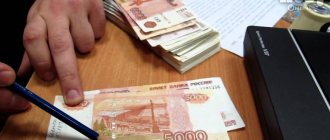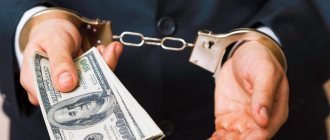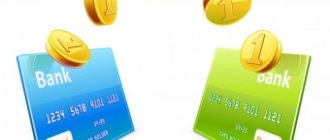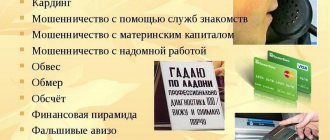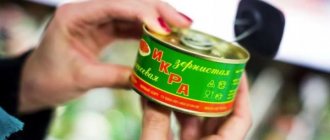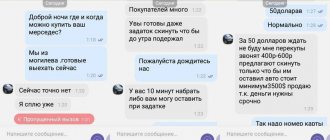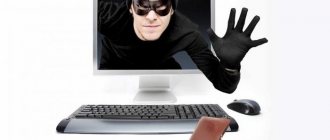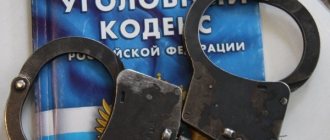Criminals have learned to counterfeit money a long time ago, and modern technologies only make this task easier for them. The first fakes appeared in Russia back in the 15th century. Therefore, now you should not be surprised that you have come across a counterfeit bill. The main thing is to behave correctly when you discover fake money, since even storing it is a crime.
How to recognize counterfeit money
Counterfeiting banknotes is a common phenomenon in many countries around the world. Russia, Ukraine, and Belarus are no exception. Counterfeiting is a criminal offense, so if you have any suspicion, you should check whether the bill is counterfeit or not:
- If you look at the banknote more closely, you will notice watermarks, security threads, perforations, etc. The fake does not have these signs.
- Particular attention must be paid to the quality of the paper. A real banknote even feels very different from a fake. You can also conduct a small experiment by dropping iodine onto a banknote. If the money is counterfeit, then the bill will turn blue in this place.
- Real banknotes always have special relief marks. They are applied to people with vision problems. They are also used to determine whether a bill is counterfeit. For example, on a banknote of 5 thousand rubles you can easily find the inscription “Bank of Russia Ticket”, an image of the denomination, etc.
- If you twist the bill in different directions, you will notice how the image changes and hidden pictures appear. These signs are very difficult to fake, so their presence is almost always a 100% guarantee that the money is real.
The main signs of fake money are inconsistency in the color of the dyes and their instability to moisture, the appearance of stripes on the banknote, shedding of paint, unclear or complete absence of watermarks, thick paper. Most often, banknotes in denominations of 500, 1,000 and 5,000 rubles are counterfeited.
Of course, no one checks every bill that is in your wallet. And it is unknown how many fakes each citizen unknowingly pays for. Therefore, if a fake is detected, it is imperative to take appropriate measures.
Where is there a risk of encountering a fake?
The greatest chance of getting a fake is in small shops and street trading places. Wherever there is no cash register, the risk increases. It is almost impossible to thoroughly check every banknote on the market.
A guarantee that no one will hand over a counterfeit is to pay by card and receive the amount to the card account.
What to do if you get a fake
They can slip a fake anywhere. This could be a store clerk giving change, a conductor on a bus, etc. Store owners themselves often encounter this when they discover counterfeit items in their proceeds. Of course, most often a high risk of receiving counterfeit money occurs during a purchase and sale transaction of an expensive item.
It is much easier to slip a counterfeit into a package, so it is important to be able to identify a counterfeit or conduct such transactions using non-cash payments. If a person nevertheless discovers a real fake, this money should never be used.
Important! Even if there is a desire to pay with such a bill, it should be remembered that for this a citizen will face criminal liability under Art. 186 of the Criminal Code of the Russian Federation.
Self-defense rules
Unfortunately, today the Central Bank of the Russian Federation obligatorily communicates special information about series, numbers of seized counterfeit banknotes, etc. only to subordinate cash settlement centers and banks. Employees of non-credit institutions involved in handling cash must distinguish counterfeits independently at their own peril and risk.
A few simple rules will help you minimize the risk of receiving counterfeit banknotes, as well as avoid unpleasant situations in cash transactions and financial losses:
- study the signs of the authenticity of banknotes and carefully inspect accepted banknotes, especially large denominations. Use several different authentication features to verify;
- when exchanging large sums in banks, write down the numbers and series of all your bills in advance to prevent their substitution;
- If you often have large sums on your hands, use special technical means to verify the authenticity of banknotes.
And finally, if you do find a dubious banknote in your wallet, do not try to spend it in a store or market. Remember that in this case, in addition to financial losses, you may also lose time and nerves, finding out the origin of this money with employees of the internal affairs bodies.
Is it possible to hand over counterfeit banknotes somewhere?
So, the man was paid with counterfeit money. Where should you take them to exchange them for real ones and report a crime? A law-abiding citizen has two options:
- bank;
- police.
According to the law, if a person comes across a counterfeit banknote, he can contact any banking institution. There, the cashier will check for signs of counterfeiting, and then return it back to the applicant or take it away for a more thorough examination. You can also contact the police. It is desirable that the citizen can say under what circumstances he found the bill (or was given it as change).
Actions of the cashier upon detection of counterfeit bills.
The cashier strictly follows the rules established by the regulations of the Central Bank “On the procedure for conducting cash transactions.” According to them, he is obliged:
- Accept cash only upon presentation of the client's passport
- Check the authenticity of banknotes using special devices
- When verifying that the banknotes are counterfeit, he stamps “Counterfeit” on them, the name of the bank, branch number, his full name, date and time.
- Seize counterfeit money
- Draw up a protocol on the seizure, including all the necessary information.
- Give one copy to the client.
- Notify security personnel about the incident
- Submit counterfeit banknotes for examination.
If the banknotes are recognized as counterfeit, the case is transferred to the internal affairs bodies to conduct an investigation into where they came from.
In what cases will the money be returned?
If a suspicious bill is discovered and the person immediately contacts the bank or the police, they can give him the money back. But, unfortunately, it will not be possible to replace a counterfeit banknote with a real one in this way. In other words, no compensation will be given for providing counterfeit money.
This rule is used to prevent counterfeiters from legally exchanging counterfeits. In fact, the return of money depends on the victim. If he can bring the fraudster to justice, he will return them. But for this you will have to go to court.
The money will be returned to the owner if:
- The examination showed that the bill is real. Any bank will detect this almost immediately, so the procedure will not take much time. But then you can safely use the money without fear of getting a prison sentence.
- The banknote turned out to be counterfeit. Bank employees will return it by stamping it accordingly. Subsequently, it can be evidence of fraudulent actions when a person goes to court to recover damages. The bank employee also has the right to hand it over to law enforcement officers.
In any case, money can only be replaced by the person who slipped the counterfeit.
Reflection in accounting
In accounting, the withdrawal should be reflected by the entry: Dt 73 Kt 50. Its amount will coincide with the denomination of the questionable banknote. After the responsible employee transfers the banknote to the bank and brings a supporting document (certificate, memorial order) to the accounting department, you need to register the entry D-t 76 K-t 73. Then, if, according to the results of the examination, the banknote turns out to be counterfeit, write it off in D- t of account 94 “Shortages and losses from damage to valuables” in correspondence with account 76. And then everything depends on whether the cashier is found guilty or the amount of the shortfall will be covered by the organization’s funds. In the first case, it is necessary to register the posting D-t 73 K-t 94, and in the second - D-t 91 K-t 94.
When determining the cashier’s guilt or lack thereof, you need to remember that, on the one hand, the cashier bears full financial responsibility for the valuables transferred to him and must compensate in full for the damage caused to the organization. On the other hand, the organization is obliged to create conditions for the cashier to perform his official duties. In particular, to ensure, for example, the availability of special technical means to identify dubious banknotes. In addition, an agreement on full financial responsibility must be concluded with the cashier.
How to protect yourself from counterfeiting
Anyone can fall for a fake, so it is important to follow simple safety rules. You need to do the following:
- It is advisable to use cashless payments as often as possible.
- If we are talking about a large sum of money (for example, when selling property), care should be taken to check the banknotes. Payment can be made at the bank.
- You should not exchange large banknotes on the market or from private traders.
- It is better to change currency at a bank rather than at dubious exchangers.
If you suspect that a counterfeit product has been provided, you should refuse to accept it and demand a refund of your money. If they try to slip banknotes during the purchase of goods in the form of change, you should try to detain this person under any pretext and call the police. As a last resort, it is necessary to attract witnesses.
What will happen to a banknote that has been seized for examination to determine its authenticity?
If the bill turns out to be genuine, the funds will be credited to the client’s account after examination. If it turns out to be fake, it must be destroyed.
Author of the article, financial expert
Dmitry Tachkov
Hello, I am the author of this article. I have a higher education. Qualified investor. Finance and credit specialist. Worked in commercial banks of the Russian Federation for more than 3 years. I have been writing about finance for more than 5 years. Please rate my article, this will help improve it.
about the author
Useless
0
Interesting
0
Helped
0
Criminal liability
The main thing is that in no case should you try to get rid of a fake by purchasing a product. It may turn out that the fake will be discovered and then serious problems will arise with law enforcement agencies.
The fact is that the presence of punishment for counterfeiting does not mean that only the one who, in fact, counterfeited the money is responsible.
Article 186 of the Criminal Code of the Russian Federation implies that liability also extends to the storage, transportation and sale of counterfeits . It is very difficult to prove your non-involvement in a crime. As for the punishment itself, the sanction of this article provides:
- Imprisonment (up to 8 years), forced labor (up to 5 years) or a fine (up to 1 million rubles).
- Imprisonment (up to 12 years) and a fine (up to 1 million rubles) if the act was committed on a large scale.
- Imprisonment (up to 15 years) and a fine (up to 1 million rubles) if the crime was committed by an organized group.
It is not necessary to take counterfeit money to the bank or the police (especially if it is unknown where it came from in the wallet). The bill can simply be destroyed, that is, burned or torn. But in order not to destroy real money, it is still better to check it first.
Every citizen must be able to recognize a counterfeit, and this applies not only to rubles, but also to other currencies. Even despite the fact that modern criminals know how to make banknotes almost identical to the real ones, and often a specialist without the appropriate equipment cannot give a definite answer about their real value.
What is counterfeit money and where does it come from?
Counterfeit money is a copy of illegally issued banknotes. They do not have protective signs and elements, and for their creation, storage and distribution the Criminal Code threatens with imprisonment for several years. In recent years, the amount of counterfeit money has increased several times. Fraudsters have improved their counterfeiting methods so that even modern devices for recognizing the authenticity of currencies are unable to determine their authenticity.
Counterfeit banknotes are produced both within the country and imported from abroad by smugglers. You can also get a counterfeit banknote at a bank branch. This may be due to the fact that the cashier was unable to recognize counterfeit banknotes when receiving them from the client, or he was guided by deliberate actions aimed at illegally selling counterfeit money.
Thus, there are quite a few ways in which counterfeit banknotes can appear, so you should know your plan of action if they suddenly turn up in your wallet.
